Suspension Losses Confirmed
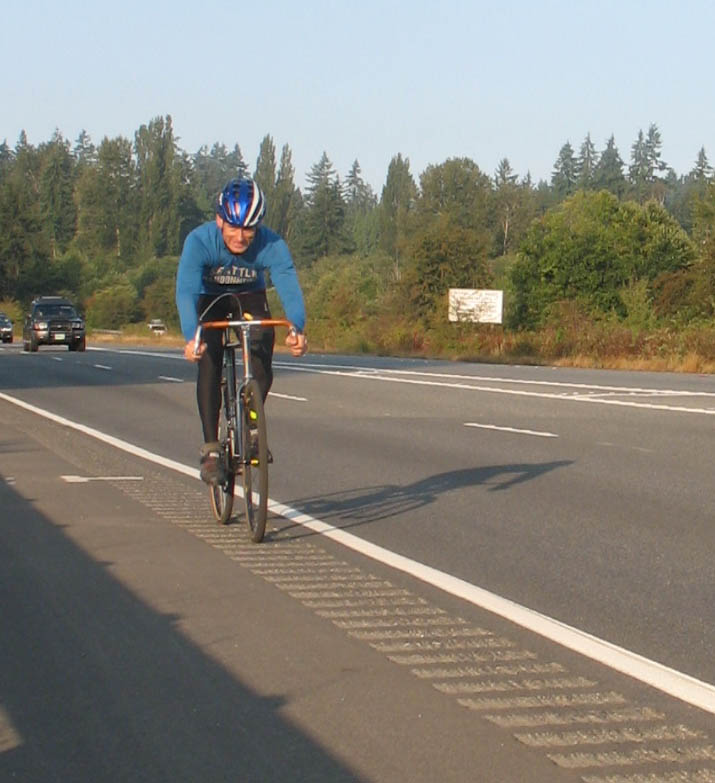
Recently, Bicycle Quarterly’s experiments on suspension losses have been replicated and confirmed: Higher tire pressures don’t result in faster speeds – even on smooth pavement. Replicating results is a crucial part of science, which makes the new results an important milestone in the understanding of bicycle performance. No longer is it just Bicycle Quarterly talking about suspension losses and lower tire pressures – the science is becoming widely accepted.
When Bicycle Quarterly’s tire tests (below) showed that higher pressure didn’t make your tires faster, few people believed it. Back in 2007, everybody “knew” that pumping up your tires harder made them faster.
We had doubts, too. So we tested again and again, and our results always were the same. We concluded that it was true, even if it went against the accepted wisdom of almost 100 years of cycling knowledge.
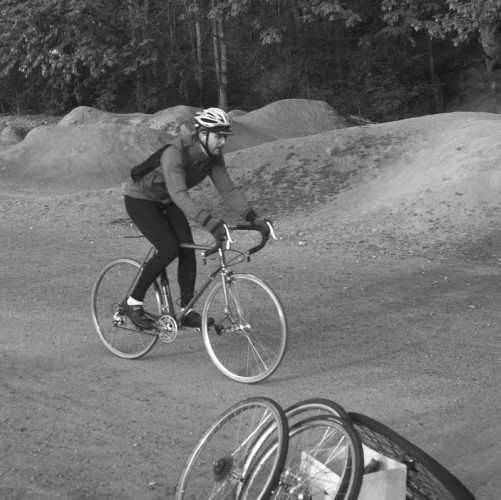
Looking through the literature and talking to experts like Jim Papadopoulos, we found a mechanism that could explain this: suspension losses caused by vibrations. As the tissues in the rider’s body rub against each other, friction turns energy into heat. And that energy must come from somewhere: It is taken from the forward momentum of the bike. Your body vibrates, and that slows down the bike. (The bike also vibrates, but it’s not as significant, since it’s mostly made from hard materials that don’t generate much friction.)
The next step was to prove that these vibrations could cost significant power. We went to rumble strips on the shoulder of a highway (photo at the top), because they allowed side-by-side comparison between smooth pavement and a “standardized” rough surface. The results were surprising: Riding on the rough surface took up to 290 Watts more than riding on the smooth surface (below).
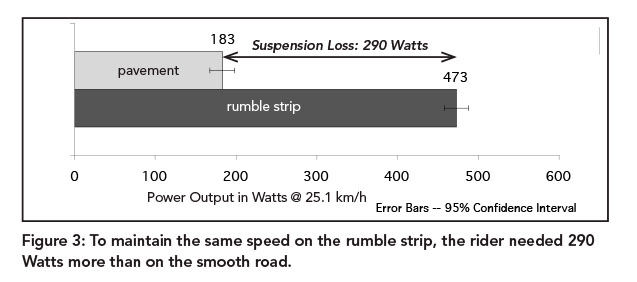
Where did those 290 Watts go? After testing various pieces of equipment on the rumble strips all day, I knew where the energy went: My body was sore all over. I had experienced suspension losses on my own body!
Careful testing is only a first step. Real science demands that all scientific experiments are repeatable and replicable.
Repeatable means that if you run the same experiment twice, you must get the same result. We did that multiple times: Each configuration was run at least three times. And we ran the same equipment at the beginning, in the middle and at the end of the test, to make sure that conditions (wind, temperature, etc.) did not change and affect the results.
Replicable means that others must be able to do the same experiment, and get the same results. We published our methodology for testing suspension losses in Bicycle Quarterly. That was back in 2009, and we’ve been waiting for others to replicate them. We are excited that now Joshua Poertner has done similar test, also using rumble strips. And his results are similar to ours:
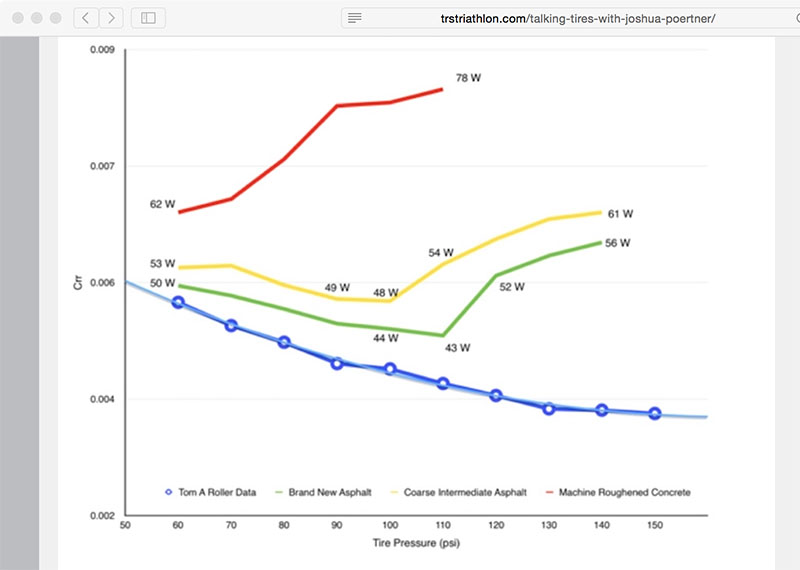
The blue line at the bottom shows the old-style steel drum tests: Higher pressure makes your tires faster. But that is true only if you don’t have a rider on board. (No rider = few suspension losses)
Once you put a rider on the bike, things start to look very different: The green line shows brand-new asphalt, the yellow line coarse intermediate asphalt, and the red line are the rumble strips. You can see that resistance increases beyond a certain pressure. This is the opposite of the old wisdom, which is expressed by the blue line.
It’s important to remember that the green, yellow and red lines are real-world testing. The blue line is done in the laboratory. And when laboratory tests don’t match the real world, then they are useless.
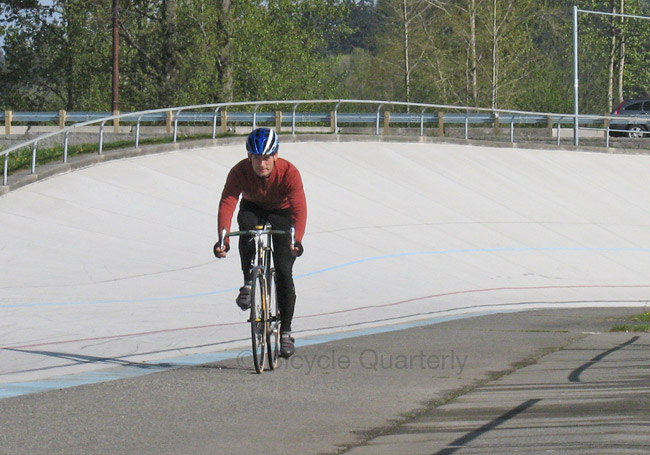
The article doesn’t mention Joshua Poertner’s methodology. I am a bit surprised that the dropoff in performance at higher pressures is so large. Our own testing (above) – on very smooth pavement – showed that very high pressures actually resulted in the same performance as lower pressures – not worse performance, as Joshua Poertner’s data seem to indicate. In the future, we’ll have to figure out which is correct. Or perhaps it’s a simple matter of Joshua Poertner’s “smooth” asphalt being rougher than ours…
However, everybody now agrees that higher pressures do not make you faster. We also agree that when things get rough, higher pressures are actually slower.
For riders, what matters most is how you can make your bike faster. And Joshua Poertner’s advice mirrors what we’ve been saying for years: “It turns out that it’s much better to be 10 or even 20 psi lower than the ideal tire pressure than 10 psi higher.” And: “Here’s the next thing you have to think about. As tire width increases, tire pressure decreases. So a wider tire performs better in terms of rolling performance.”
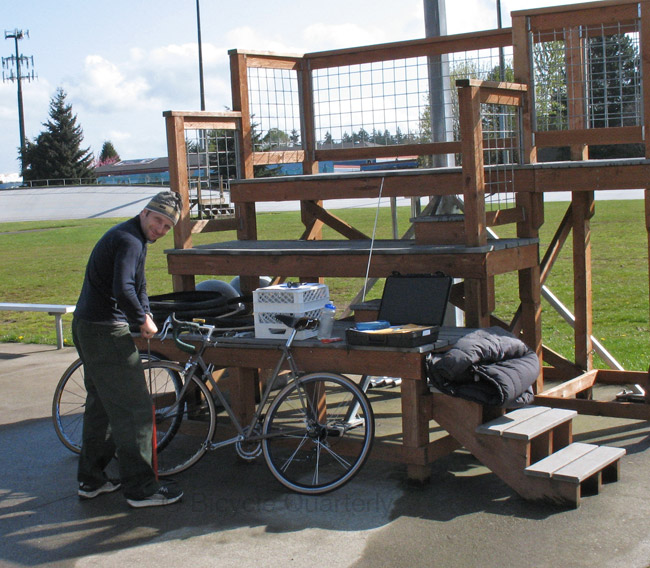
Looking into the future, Poertner said: “I remember when wheels went from 19 mm to 23 mm. It was a very gradual process. And then we went from 23 mm to 25 mm. Now we’re seeing 28 mm wheels. Where does it stop? I don’t know.”
And we all agree that wider tires are faster because they can run at lower pressures over a mix of surfaces. Joshua Poertner is comparing identical tires at different widths. It is understood that to offer good performance, the wider tires must be supple, otherwise, you lose too much energy to flexing the tire casing at it deforms with each wheel revolution.
In other words: On most roads, and especially on rough ones, a 32 mm Compass tire will be faster than a 26 mm Compass tire. But a 42 mm Schwalbe Marathon will be slower than both, even though it’s wider – because it’s so stiff that its casing absorbs way more energy.
Here is what it means in practical terms:
- Run the widest tire that fits your frame, at least within reason. Bicycle Quarterly’s tests have shown that 32 mm tires roll as fast as 25 mm even on very smooth asphalt, and faster than 23 mm or 20 mm. On rough roads, the wider tires are clearly faster. Since we measured this at 22 mph (35 km/h) with a rider, this takes into account the wind resistance at typical “spirited” cycling speeds.
- Run your tires at a relatively low pressure that still offers good handling. You don’t want your tires collapse under hard cornering, but beyond that, there is no benefit to adding more air. Experiment with different pressures, but don’t be afraid to let out some air.
- Select the most supple tire for the best performance.
It’s taken almost a decade, but it’s nice that our results finally have been replicated and confirmed. What once was controversial is becoming universally accepted. And as Joshua Poertner points out (“Where does it stop?”), there is more research to be done. Fortunately, Bicycle Quarterly is already working on this!
Further reading:
- TRS Triathlon on Joshua Poertner’s research.
- Bicycle Quarterly 29 with our tests of suspension losses for different bicycle setups (wide vs. narrow tires, suspension forks vs. flexible fork blades, etc.)


